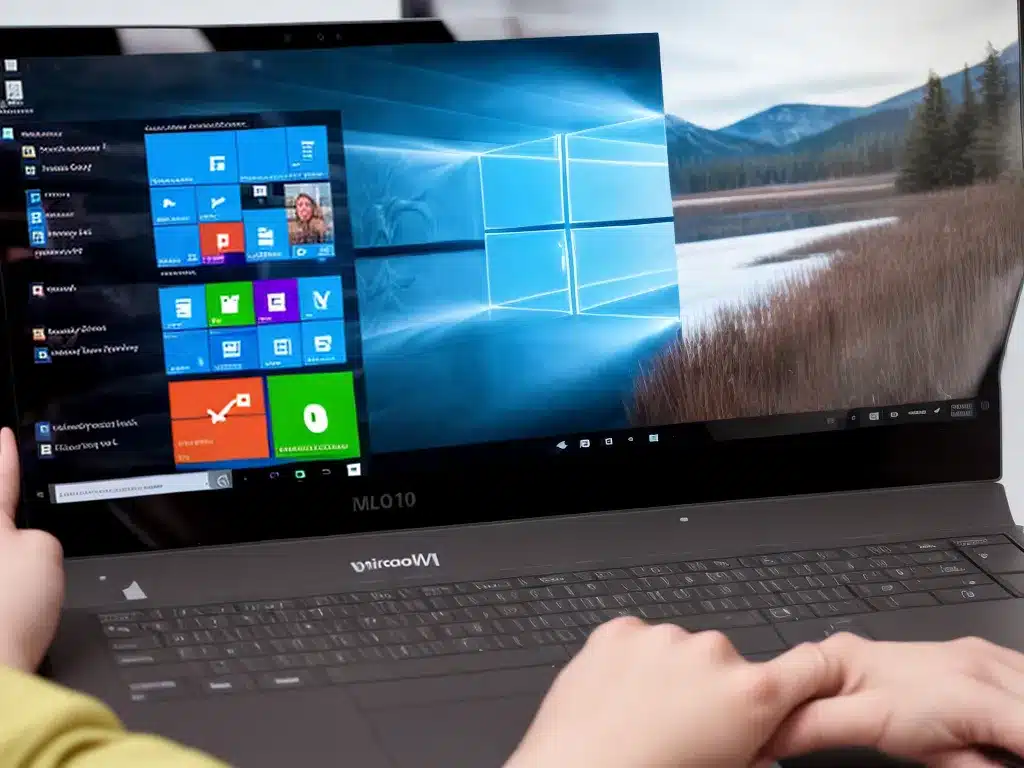
Introduction
The Start menu in Windows 10 allows you to launch apps, search for files, and access system settings. While Windows 10 comes with a default Start menu, you can customize it to better suit your needs and preferences. In this guide, I will walk you through the various ways to customize the Start menu in Windows 10.
Ways to Customize the Start Menu
There are a few different ways you can customize the Start menu in Windows 10:
Resize the Start Menu
By default, the Start menu in Windows 10 takes up the left quarter of the screen. You can make it wider or narrower by following these steps:
- Right-click the Start button or press Windows key + X.
- Select Settings from the power user menu.
- Navigate to Personalization > Start.
- Under Show more tiles on Start, move the slider to resize the Start menu. Move it left to make the Start menu narrower or right to make it wider.
Resize Tiles
You can resize the tiles in the Start menu to make them smaller or larger:
- Right-click on any tile in the Start menu.
- Select Resize from the menu.
- Choose either Small, Medium, Wide, or Large to change the tile size.
This will only affect the size of that particular tile. Repeat for other tiles to resize them.
Rearrange Tiles
To rearrange Start menu tiles, click and drag a tile to the desired location and drop it. You can rearrange tiles in the main Start menu area as well as within groups.
Create Tile Groups
For a more organized Start menu, you can group related tiles together:
- Right-click on an existing tile.
- Select Create new group from the menu.
- Type in a name for the group.
- Drag and drop tiles into the group to add them.
You can drag the groups to rearrange them.
Add/Remove Tiles
To add more tiles for various apps and programs to your Start menu:
- Open the program you want to add
- Right-click its icon in the taskbar
- Select Pin to Start
To remove a tile:
- Right-click the tile
- Select Unpin from Start
This will unpin the tile from the Start menu but the app will still be installed.
Customize Start Button
You can change the look of the Start button by right-clicking the Start button, selecting Settings, and choosing your preferred color and size under Start button.
Show More or Fewer Recommended Items
Windows displays recommended apps and documents on the Start menu by default. To show more or fewer of these suggestions:
- Go to Settings > Personalization > Start
- Move the toggle for Show suggestions occasionally in Start
- Select the number of recent and suggested items to show
Turning this toggle off completely removes all recommended items from the Start menu.
Disable Recently Added Apps
Newly installed apps automatically appear in a section on the Start menu. To disable this:
- Go to Settings > Personalization > Start
- Turn Show recently added apps to Off
This will prevent newly installed apps from being highlighted in the Start menu.
Customize Start Menu Layout
For deeper customization like changing the layout of the Start menu and taskbar, move the taskbar, etc. you can right-click the taskbar and select Taskbar settings. From here you can:
- Switch between centered and left-aligned Start menu
- Automatically hide taskbar
- Use small buttons on the taskbar
- Turn system icons on/off
There are many ways to tailor the Start menu and taskbar area in Windows 10 to match your preferences. Don’t be afraid to play around with the various settings. You can always revert changes back if you don’t like them. With some tweaking, you can get your ideal Start menu setup.
Reset the Start Menu
If you want to undo all customizations and restore the Start menu back to its original default settings, follow these steps:
- Open the Start menu
- Click the cog icon to open Settings
- Go to Personalization > Start
- Scroll down and click Restore default Start menu
- Restart your computer
This will reset both the Start menu layout and taskbar configuration back to default.
Conclusion
The Start menu is a central part of the Windows experience. While the default setup works fine, customizing it can help boost your productivity by putting the apps and functions you need most at your fingertips. Resizing, rearranging, pinning/unpinning tiles, and toggling recommended app suggestions are just some of the ways you can tailor the Start menu to best suit your needs. Don’t hesitate to experiment until you get a layout that works for you.












